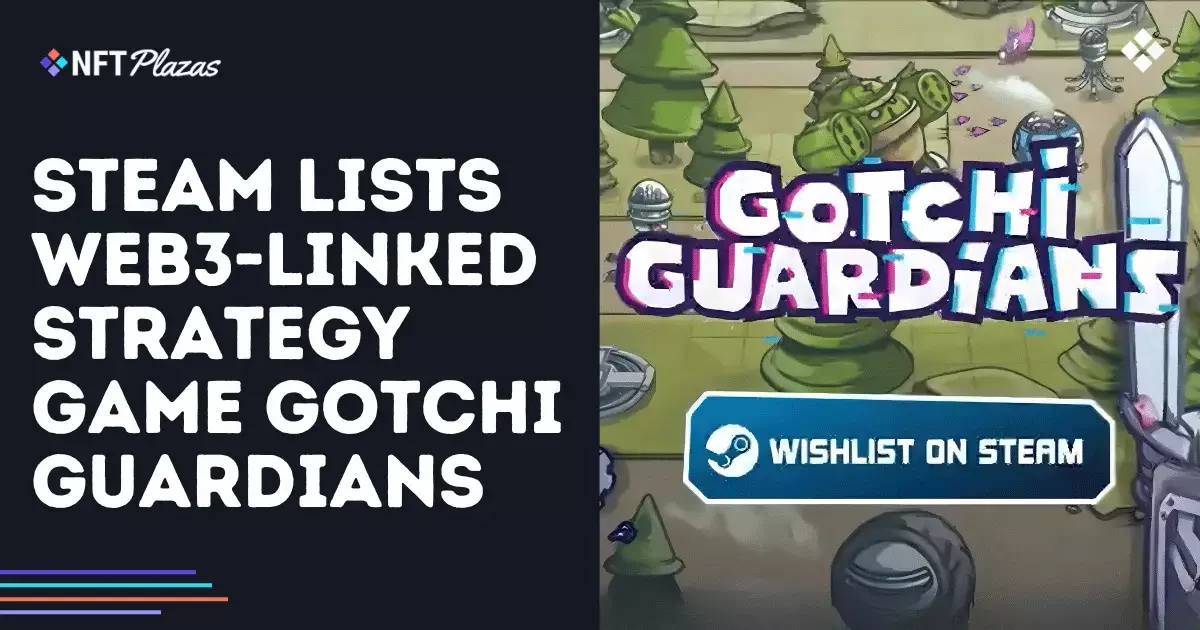The recent addition of Gotchi Guardians to Steam’s platform exemplifies a troubling trend in the video game industry: an overhyped integration of blockchain technology, cloaked in the guise of innovation. Developers and publishers are increasingly banking on blockchain’s allure to attract players, yet they rarely substantiate these claims with meaningful gameplay improvements. Instead, what we see is a superficial embrace of NFTs and crypto payments that often distract from core gaming virtues like fun, fairness, and engagement.
The developers of Gotchi Guardians, Pixelcraft Studios, claim that blockchain elements such as NFT cosmetic skins and in-game currency payments are entirely optional and do not influence gameplay mechanics. This design choice, while seemingly reassuring, serves as a thin veil to justify the platform’s blockchain-centric features. It begs the question: if these elements are truly optional and non-intrusive, why do they exist at all? Are they merely a sentimentally marketed gimmick that appeals to crypto enthusiasts or a calculated attempt to leverage the hype surrounding NFTs?
This approach reveals an inherent flaw: the primary aim is not to enhance the gaming experience but to promote a technological novelty that often complicates standards of fairness and transparency. Blockchain’s integration tends to breed exclusivity, where possession of rare NFTs confers visual customization but rarely grants any gameplay advantage—yet it raises concerns about fragmented ecosystems and potential pay-to-win scenarios in the future.
The Mirage of Player Agency and Content Longevity
Despite Pixelcraft Studios’ assertions of committed support, the core gameplay of Gotchi Guardians remains unchanged by blockchain features—yet this does not mitigate the risk of long-term consequences. NFT ownership and crypto transactions introduce a speculative element that can distort player incentives and community integrity. When cosmetic items become tradable NFTs, the value often shifts from pure aesthetic appreciation to financial speculation, reorienting player priorities away from skill and strategy toward market manipulations.
Moreover, the core features—multiplayer tower defense combined with roguelite mechanics—are familiar archetypes. The cross-platform multiplayer offering and planned seasonal updates sound promising but are ultimately susceptible to being overshadowed by the ongoing debate over blockchain’s actual utility in gaming. Will the integration of NFTs and crypto tokens truly foster genuine player investment and community cohesion, or will it simply serve as a convenient monetization channel that alienates traditional gamers?
This concern is compounded by the fact that blockchain-based assets are inherently unstable and speculative. Introducing NFT skins supported on the Base blockchain, while optional, risks creating a two-tiered ecosystem where those willing to pay extra obtain bragging rights or social capital, sowing division rather than fostering a cohesive gaming culture. The long-term sustainability of such a model remains doubtful when compared to traditional game content, which typically relies on quality, innovation, and player loyalty.
The Ethical and Practical Pitfalls of Tokenized Gaming
From an ethical perspective, embedding blockchain elements into games like Gotchi Guardians raises serious concerns. These features often exploit players’ emotional attachment to in-game assets by sensationalizing the potential for financial gain. It commodifies time and skill, turning the enjoyment of gameplay into an avenue for investment and speculation. This shift risks prioritizing profit over player welfare, encouraging gambling-like behaviors under the guise of ownership.
Practically, the reliance on blockchain technology complicates user experience. Crypto payments, NFT trading, and blockchain-based assets introduce barriers that are unnecessary in traditional gaming. These features can alienate players unfamiliar or uncomfortable with digital currencies and blockchain mechanics, threatening accessibility and inclusivity—values historically cherished by gamers.
Furthermore, the notion that blockchain enhances game longevity or content innovation is fundamentally flawed. Patches, new characters, and events can be delivered just as effectively without involving blockchain, which remains a costly, energy-intensive, and controversial technology. The hype surrounding NFTs as a catalyst for continuous content provision is overestimated; more often than not, it results in temporary marketing spikes rather than genuine, sustainable growth.
In conclusion, the embrace of blockchain in gaming, as exemplified by Gotchi Guardians, is an exercise in misplaced perception. It offers a false promise of innovation that distracts from the genuine qualities that make games meaningful—engagement, fairness, and enjoyment. Until the industry recognizes that technological gimmicks cannot substitute for well-crafted gameplay, players will continue to be exploited by a craze that benefits developers and investors more than the gaming community itself.













